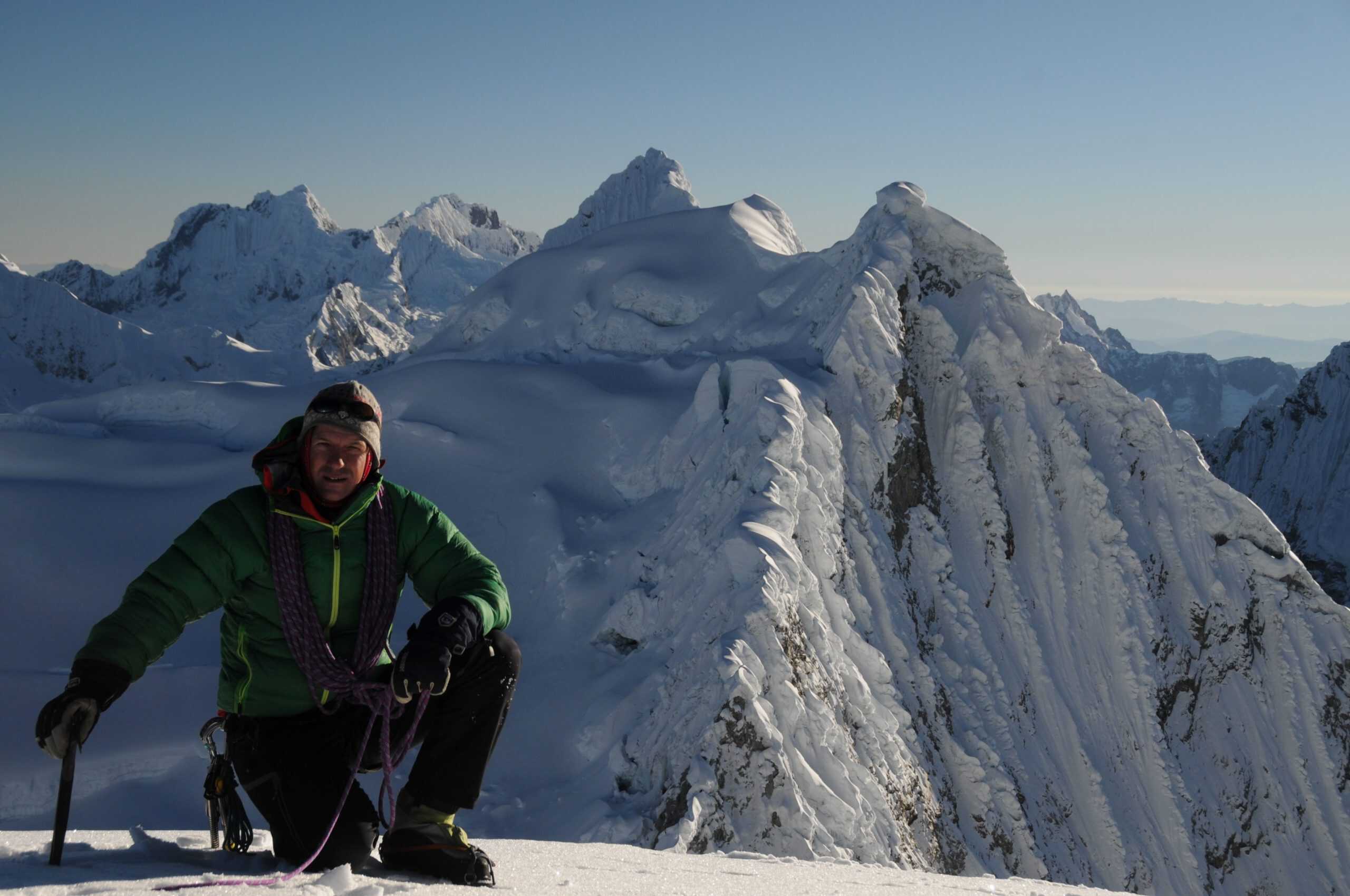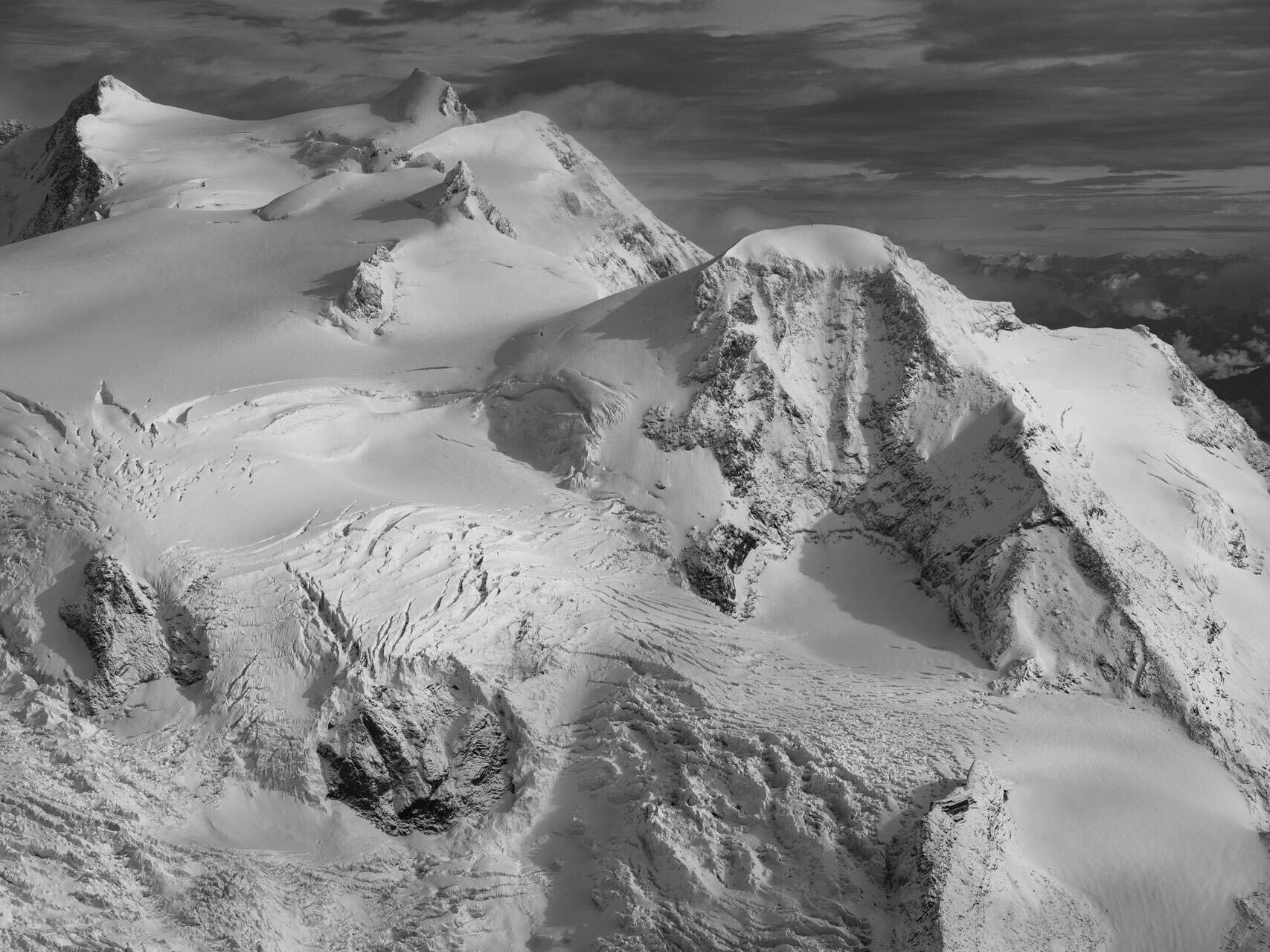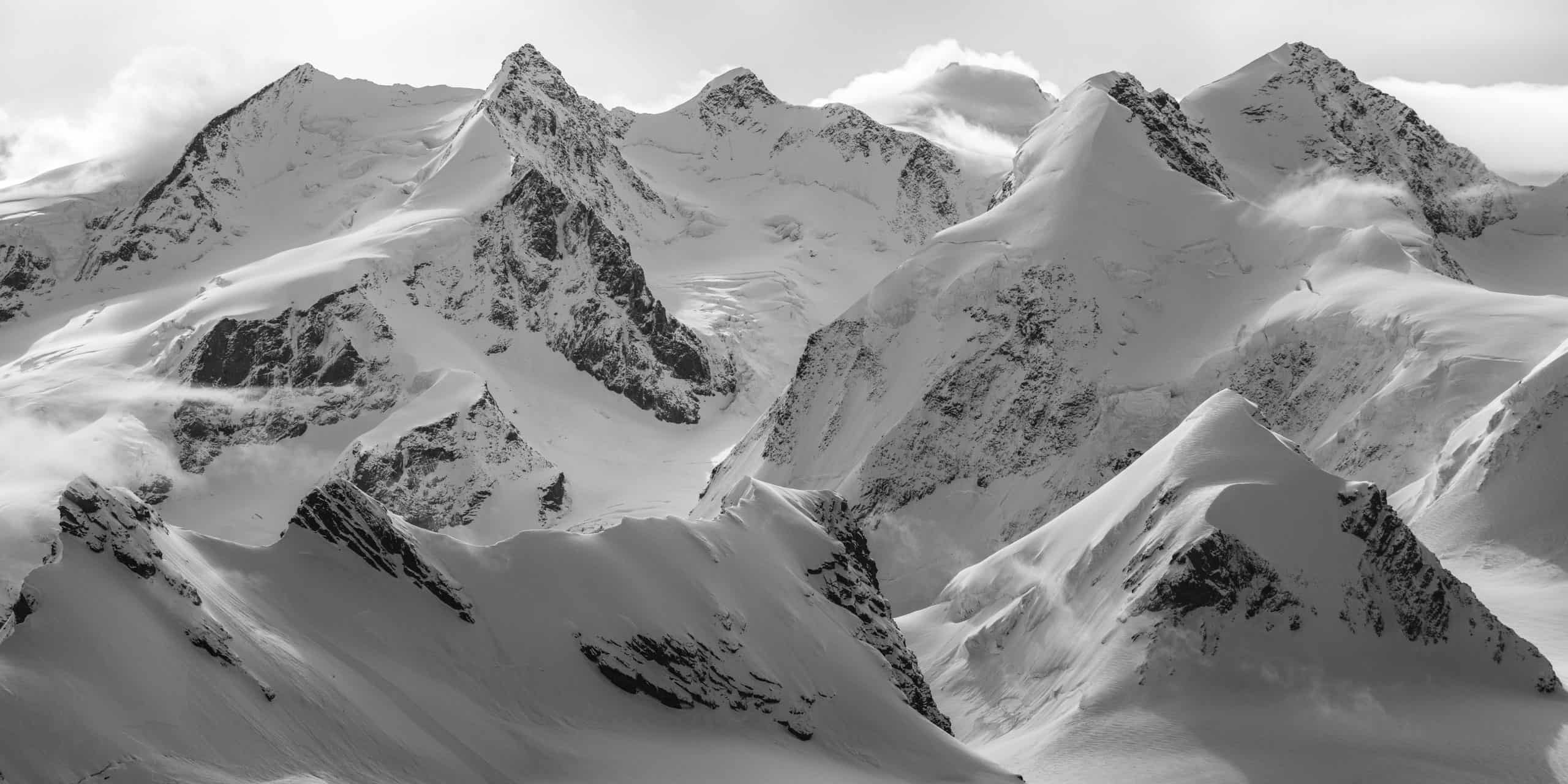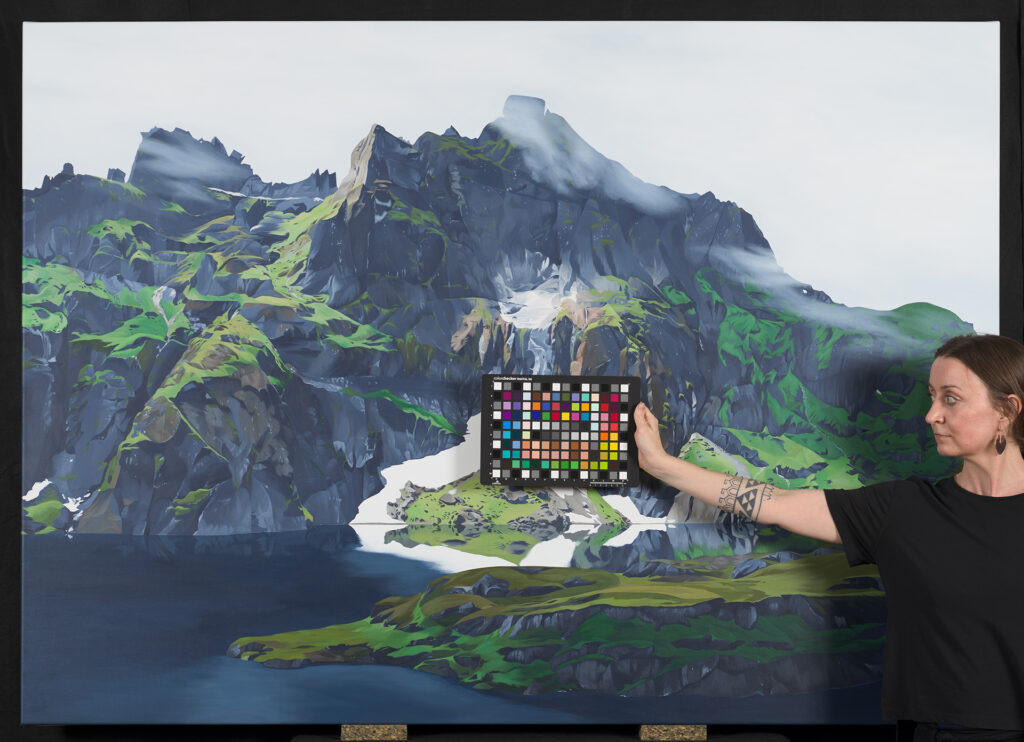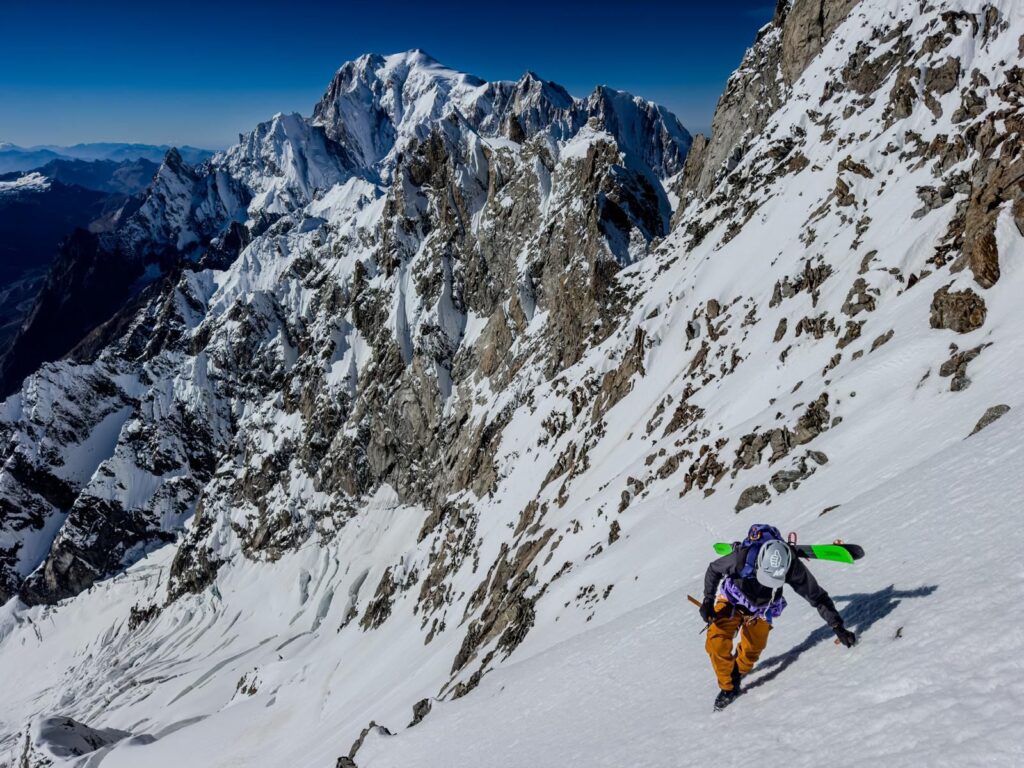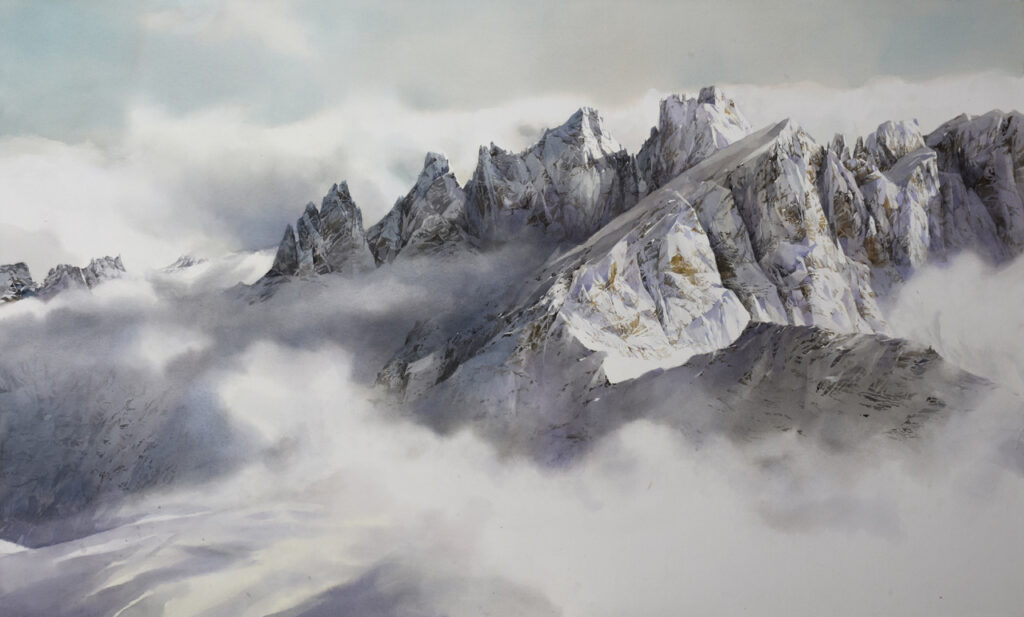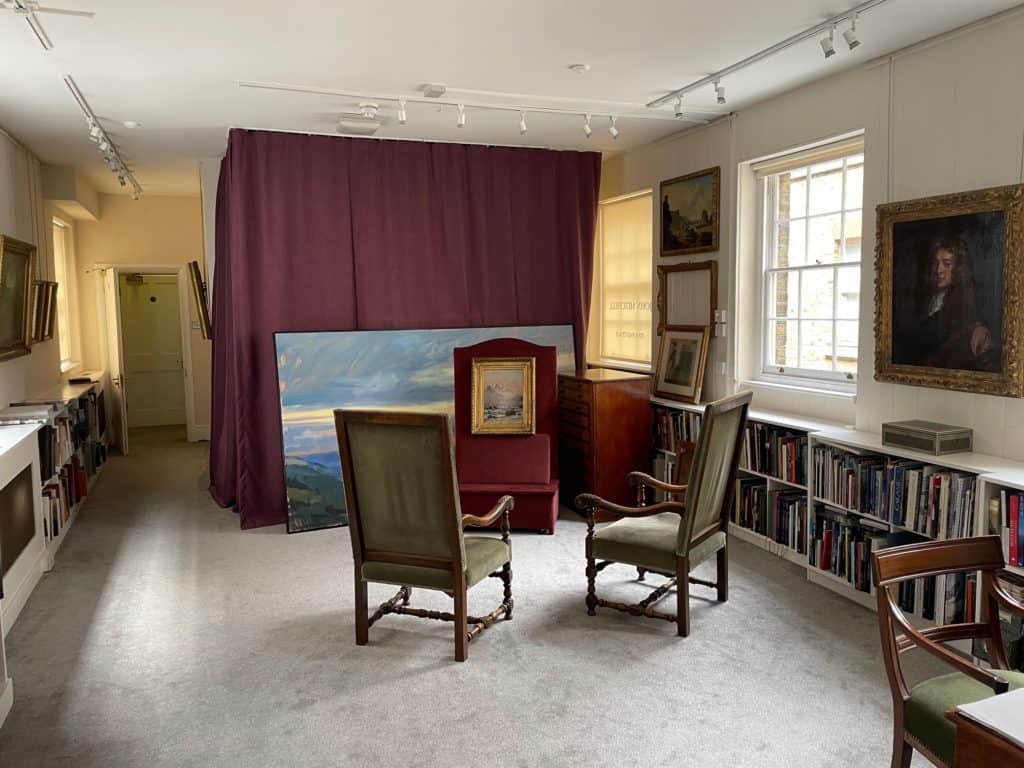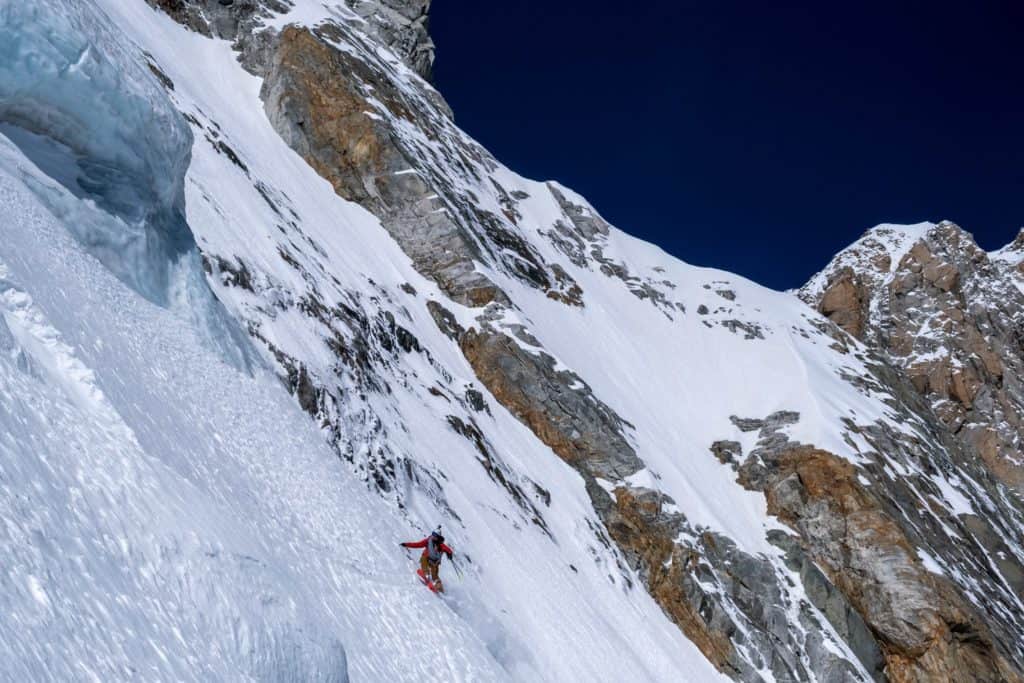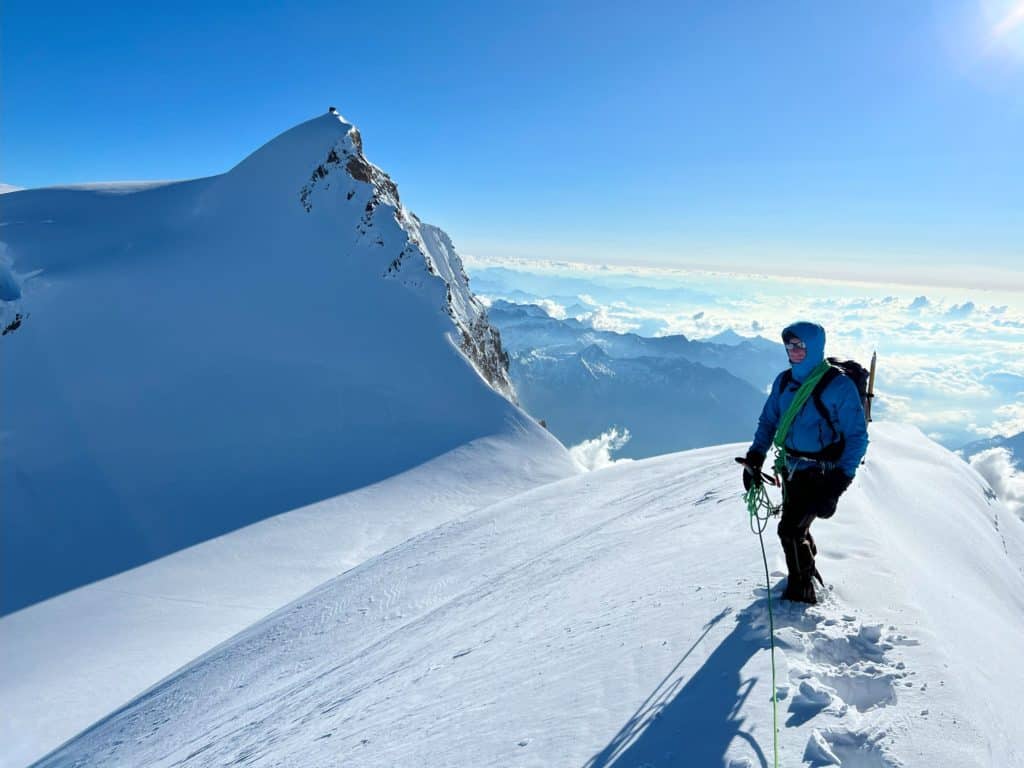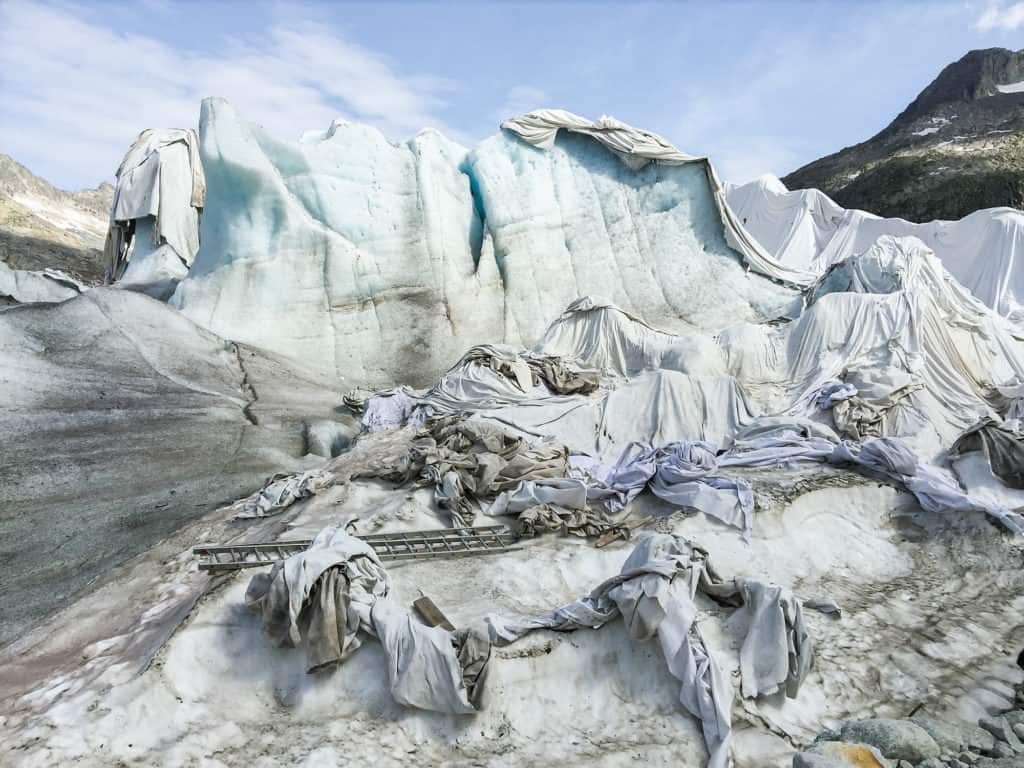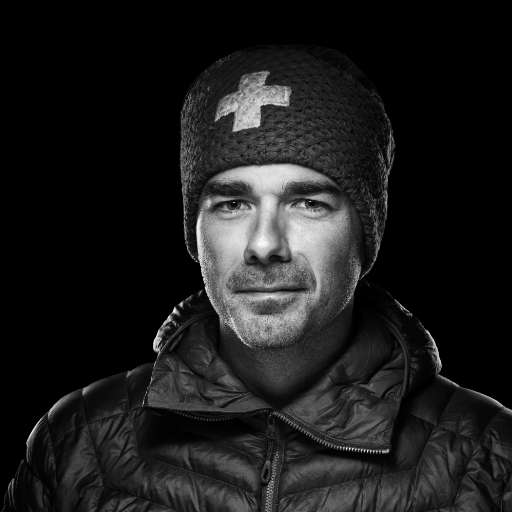Mount Rose hut keeper, guide and rescuer, Richard Lehner devotes his life to the high mountains. Helping travelers discover the world's most beautiful peaks, rescuing the most adventurous from their perilous traps, he feeds on the air of the heights. Rich in the strength that the mountains give him, his heart vibrates to feel useful. Meet an exceptional man, in love with the Alps and a fervent defender of life.
Richard Lehner, new janitor of the Monte Rosa hut | At Zermatt, in the Swiss Alps
First, tell us about the Monte Rosa hut. What does it mean to you?
The Monte Rosa hut came into my life a long time ago. When I was a full-time guide, I used to stay there before setting off to explore the legendary mountains that surround it. I knew the old hut and its janitor, who worked there for over 20 years. It was an old stone hut that exuded wood and human warmth. But since 2009, the Monte Rosa hut has had a facelift. Everything has been designed to make visitors feel at home. The architecture is innovative, the interior modern and comfortable. The rooms are spacious, with plenty of room for everyone. Energy-wise, the refuge is 95% self-sufficient. It generates its own electricity and is always heated. The cabin is equipped with showers, water is recycled and cisterns ensure a constant supply of water. To be able to enjoy such luxury in the high mountains is a real blessing. Monte Rosa Hütte is open to skiers from mid-March to mid-May. We then welcome hikers and mountaineers from June to the end of September.
Why did you choose to become the janitor of the Monte Rosa hut?
My wife and I were the janitors of the Gandegg hut, located at an altitude of 3030 m, below the cable car leading to the Klein Matterhorn. Kilian Emmenegger was our employee. The hut was open all year round, in winter for skiers and in summer for mountaineers. Managing the life of a hut in winter at this altitude was a very difficult mission. We had no water or electricity. So, after 6 years up there, my wife and I decided to give up our place and move back down to the valley. We took over the BaseCamp hotel at Zermatt. And, when Kilian and I heard that the position of janitor at the Monte Rosa hut was vacant, we both applied to take over. So, since 2019, we've been the titular janitors of this incredible alpine hut.
Living in contact with mountains and glaciers, breathing the air from the heights and enjoying the beauty of the Alps every day, all this makes me happy. I also love the links I forge with visitors. They make me feel useful, and that's very gratifying. It's a real pleasure to share my passion for the mountains with them!
How does running BaseCamp, your hotel at Zermatt, fit in with your job as a refuge warden?
My wife and I have taken over the BaseCamp hotel, which welcomes mountain lovers all year round. My wife works there full-time, while I navigate between the valley and Mount Rose. When I stay too long at Zermatt, I end up suffocating. I need the serenity of the great outdoors. I need to feel the wind on my face, to contemplate the dance of the clouds, to admire the setting sun reflected on the summits. I need to feel anchored in nature, as if I were at the heart of life. Up there, perched between earth and sky, another world opens up to me. Authentic and grandiose. And the people who come to the Monte Rosa hut share the same values and ideals as I do. A love of nature and the high mountains, and a taste for sport in the great outdoors.
Monte Rosa Hütte | Highlighting the splendor of the Valais at nearly 3000 meters above sea level Zermatt
The path that now links the Monte Rosa hut to the Gornergrat offers magnificent views of the mountains and their glaciers. Can you tell us more about its implementation?
The most beautiful glaciers in the Alps are suffering intensely from global warming. Every year, they melt further, and the level of the Gornergletscher has fallen dramatically since the first Monte Rosa hut was built. Access to the Gornergrat was becoming increasingly difficult. We therefore decided to create a new access path to the hut with the help of the Civil Protection. The old route is still open, but it's no longer accessible to the general public. I'm very proud of what we've achieved. The new path offers an exceptional panoramic view of the Swiss Alps. It overlooks the Gornergletscher, Grenzgletscher and Monte Rosagletscher. It's magnificent, without doubt one of the most beautiful paths leading to a refuge. When visitors get off the Gornergrat train at Rotenboden station, they take the path to the hut. During their 4-hour flight, they can contemplate the splendor of the glaciers, under the masterly gaze of the most famous 4,000-meter-high summits in the Swiss Alps.
The trail itself has become a destination. 80% of our visitors are hikers, who survey the mountain for its scenic beauty. After admiring this unique panorama, they spend a convivial evening at the refuge, with friends or family. The next day, they take the train back down to Zermatt along the same path, or cross the Gornergletscher to Furi. Around 20% of our visitors are mountaineers, who travel to Monte Rosa Hütte to climb one of the surrounding giants the following day. Dufourspitze , Nordend or Lyskamm for example. They get up early, at around 2 or 3 in the morning, and set off on one of the routes that will take them several hours later to an altitude of over 4,000 metres at the summit of the Valais mountains, on the border between Switzerland and Italy. A breathtaking journey!
This new access route to the Monte Rosa hut helps to enhance its appeal. Have there been any new features since you took over as janitor?
The hut was almost new when Kilian and I entered it. For the first time this year, we had to renew the solar panels and batteries that power the hut. In a place like this, there's always something to do. There's never a dull moment! The job of janitor requires you to be available and versatile.
Kilian and I manage a team of 6 to 8 employees. The cook and sous-chef do their utmost to provide the best possible meals for our guests. We work with fresh produce and, every evening, 4 dishes are on the menu menu. We also pay close attention to the quality of the wines on our wine list. As a guide, I've been to many high mountain refuges, and I can tell you that at the Cabane du Mont Rose, we eat well!
Service, reception and room cleaning are provided by 3 or 4 employees. The Monte Rosa hut can accommodate up to 120 guests, and that's no easy task! In summer, our team is on deck almost 24/7. The last guests go to bed around 11 p.m., while the first get up at 2 a.m. The heart of the hut never stops beating!
We've also installed a webcam high above the hut. It films 360° and the images are broadcast live on the Internet. This extraordinary tool enables all those who wish to do so to discover the beauty of the landscapes surrounding the Monte Rosa hut. So we can check at any time that the hut is doing well. And you can consult the video to prepare an ascent, monitor the evolution of weather conditions at summit du Mont-Rose, or simply to enjoy the splendour of the panorama on offer. The sight of this dazzling spectacle will make you want to join us up there, to meet the mountains of the Valais and their marvellous glaciers.
See the hut's webcam
The Monte Rosa hut | Memories of a janitor between peaks and glaciers
What's the most vivid memory you have of your life in the Monte Rosa hut?
My daily life at the refuge is punctuated by the flow of customers and the pace of our team. We live together day and night. I love the warmth of this group spirit. And above all, I like feeling close to our visitors. I welcome them, provide them with information about the route they want to take the next day, and inform them about the changing weather conditions at altitude. I like to help them, to share this special moment with them, to make their stay as rewarding as possible.
Despite our good will, unfortunately there are always people who don't take our advice on board. I remember, for example, a Russian woman who arrived at the hut one day wearing sneakers and shorts. She wanted to get to Italy, but to do so she had to cross a glacier. The crossing was complex and dangerous. We all warned her of the dangers of going alone and without equipment. But she went anyway. When she reached the glacier, she came across a guide who again warned her of the risks involved in continuing her ascent in these conditions. But she continued, turning a deaf ear.
Two days later, mountaineers climbing the Margherita hut sounded the alarm after hearing calls for help from a crevasse. A helicopter came for me and, with a fellow rescuer, I went to the spot. We descended to the bottom of the crevasse and what did we find? This woman, trapped in the heart of the ice for two nights already! A real miracle worker. Her body temperature was down to 28°C. She was very lucky that her cries were heard, as she certainly wouldn't have survived a third night out there. When we brought her to the surface, her first words were, "Can you take me to Italy?" Instead of fulfilling her dream, we took her to hospital! She was happy that we had saved her, of course, but it seemed normal to her. I don't think she really realized the seriousness of the situation she'd got herself into. The dangers of the mountains are real, and to embark on such a journey without a guide or proper equipment is madness.
Richard Lehner | Mountain guide and extreme rescuer
You are also a mountain guide and lifeguard. What role do these activities play in your daily life?
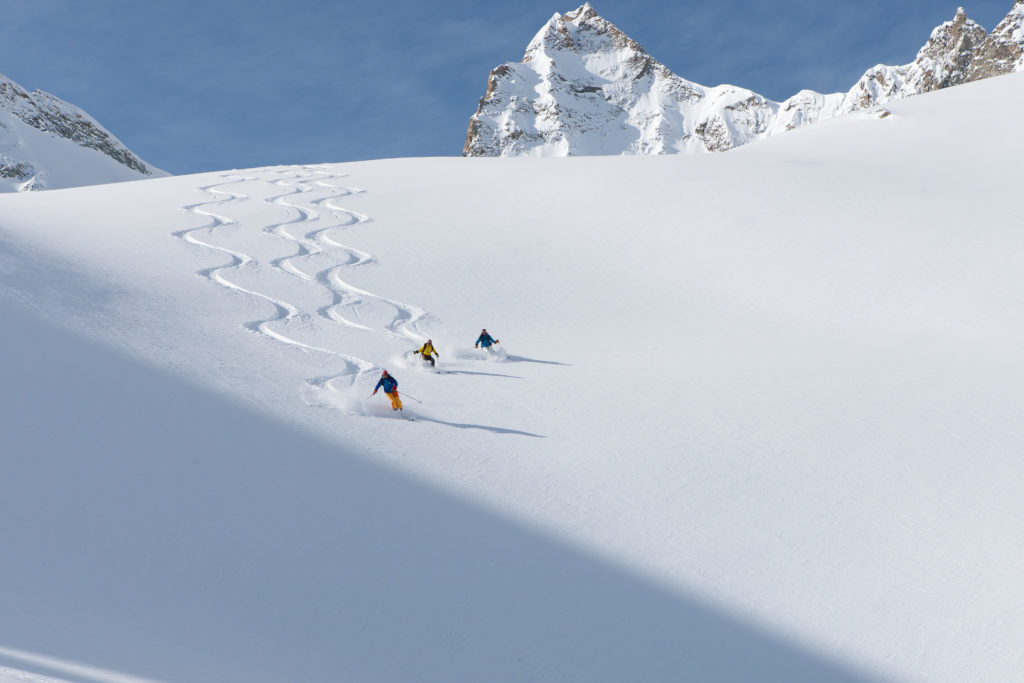
Before becoming a hut keeper, I was a full-time guide and rescuer. When the season ended in the Alps, I would accompany my clients to Nepal, India, Russia or elsewhere. But these worldwide journeys were hardly compatible with family life. So, after 20 years in the business, I felt the need to settle down for a while. I longed for a different kind of life, without moving away from the mountains. That's why I became the janitor of the Gandegg hut. I was finally able to enjoy my wife and children every day, and it was a real joy!
But when the vocation of a guide runs through your veins, you remain one forever. Introducing my clients to the majesty of the Alps, revealing the magic of unsuspected vistas, their dizzying peaks and the immensity of their glaciers. That's what gives my life meaning, and that's what's going to stay with me.
And although I'm less and less involved as a guide, I'm still a mountain rescuer. I've been helping to save lives since I was young, and even today, when the rescue services are alerted, a helicopter flies up to pick me up at the Monte Rosa hut, or I go to the heliport when I'm at Zermatt. I take part in technical rescues, in the event of an avalanche or a fall into a crevasse, for example. We evacuate people stranded in difficulty in the high mountains, and this represents around 220 rescues a year.
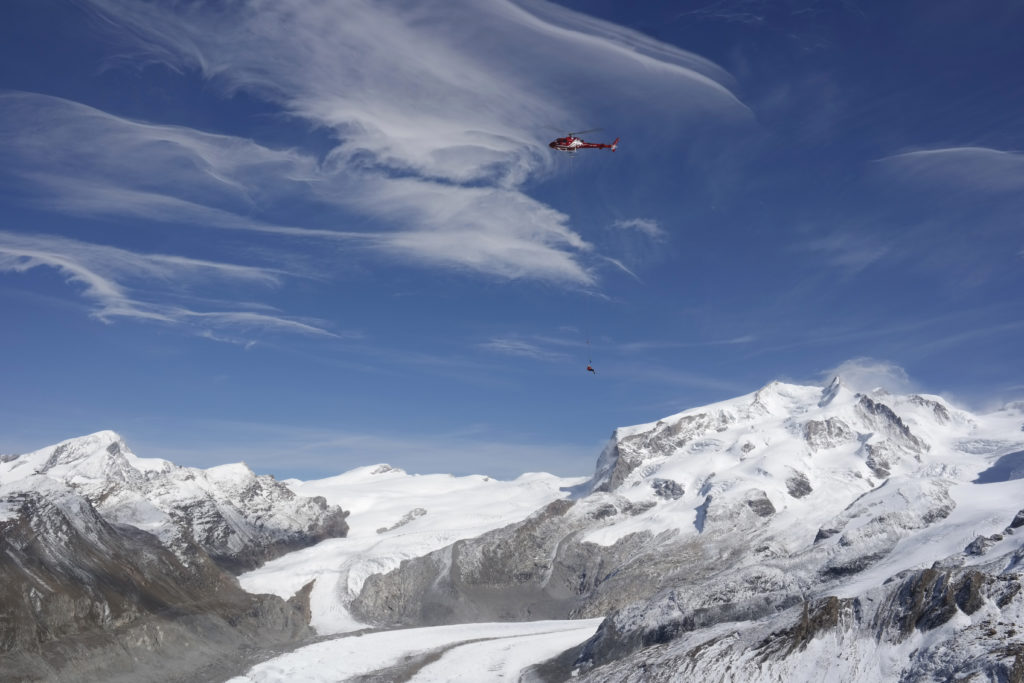
On March 8, 2011, you received the Award for Heroism in Washington D.C. for carrying out the highest helicopter rescue ever on Annapurna. Can you tell us about this milestone in your career?
In April 2010, Daniel Aufdenblatten and I were in Nepal to lead a rescue training course for pilots and Sherpas when, all of a sudden, the alarm went off. A group of Spanish mountaineers were in trouble on Annapurna, at an altitude of 7,000 meters. We didn't know if it was possible to carry out a rescue at such an altitude. But we had the equipment and the experience. So we went for it. We took our chances, even if the hope of saving these people was slim. It was hard to imagine being able to fly over the area in a helicopter, as the air pressure at such a high altitude was insufficient. Assisted by a Sherpa and a Nepalese pilot, we tried different approaches and, after several attempts, managed to get close to the victims. Then, suspended in mid-air and without oxygen, I joined them. My breathing was labored and time was running out. But I succeeded in my mission. The victims were airlifted to the base camp and then taken to Kathmandu hospital. The operation proved to be very difficult, but the rescue team from Zermatt proved that day that rescue at such an altitude was possible if carried out by experienced men with the right equipment. I'm proud of the feat we achieved, which highlights the expertise of the Zermatt rescue team. But, above all, I'm delighted to have been able to save the lives of these climbers.
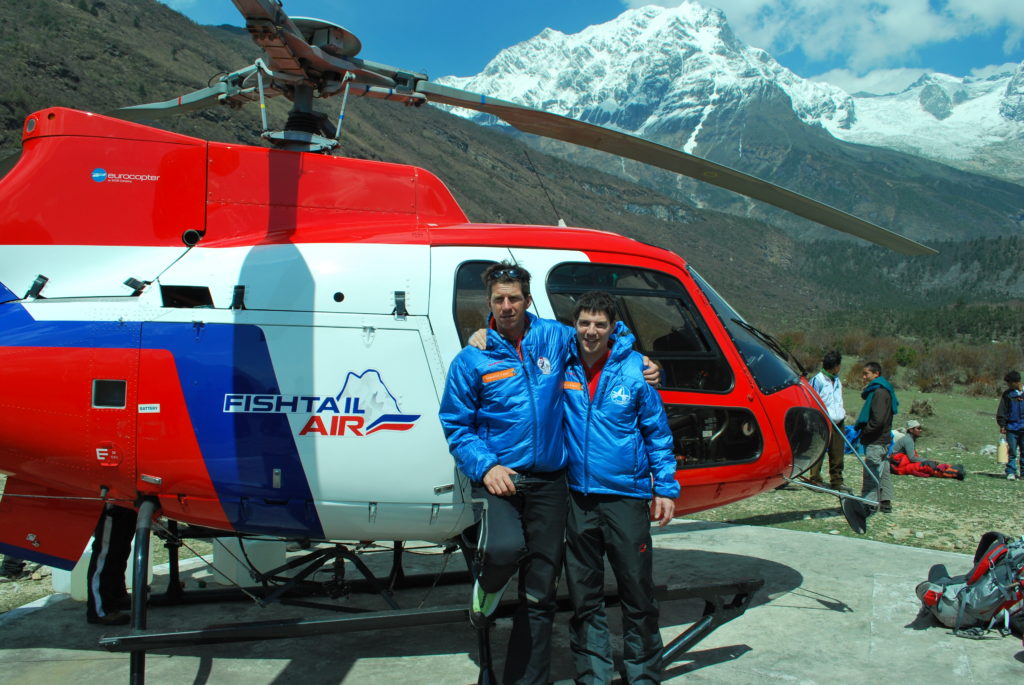
Richard Lehner | A life dedicated to high mountains and the greatness of the Swiss Alps
You've devoted your life to the mountains. But how would you define your relationship with them?
The high mountains give me real strength. When I get up in the morning and look out over the summits that surround the Monte Rosa hut, their magnificence makes me realize the profound meaning of life. Man is so small in the face of these giants of rock, yet he thinks himself so important in the world below! The mountain puts us in our rightful place. So close to the sky and facing the elements, man is once again subject to nature. He realizes the importance of life and puts his own vanity into perspective. I draw my strength from the mountains. They guide me, they nourish me. They save me and make me the man I am. It's a feeling that's hard to explain. You have to experience it to understand it. And the best way to feel the pulse of the mountain beating inside you is to confront it. To come face to face with it, and soak it in.
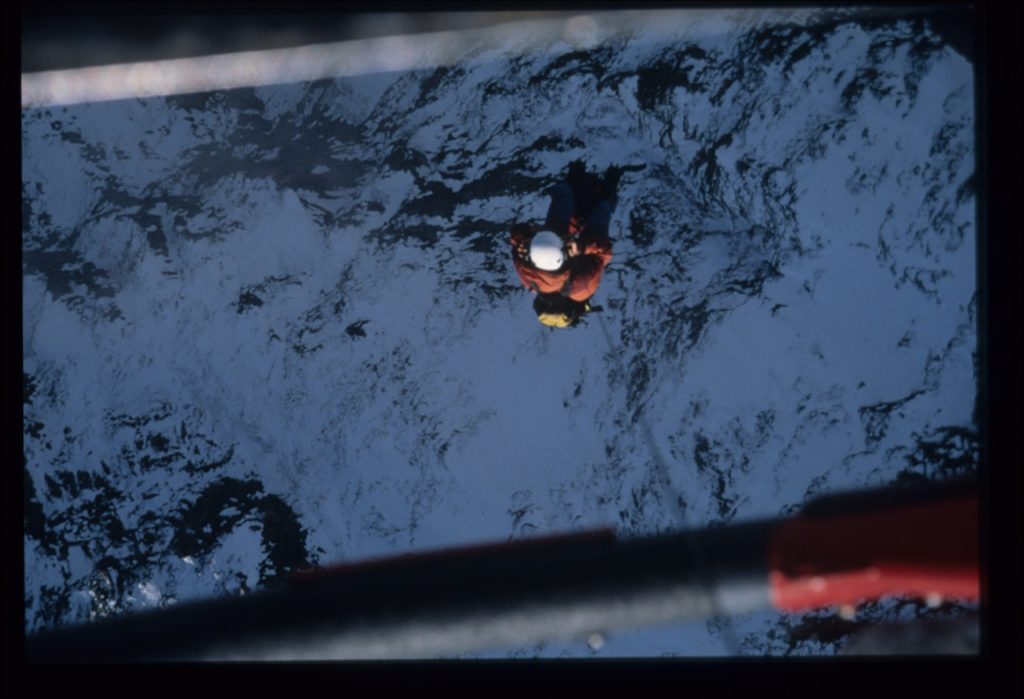
Can you tell us about your fondest high-mountain memory?
I immediately think back to that unforgettable day when I climbed the Matterhorn with my children for the first time. My sons are now 17 and 18 years old, and very sporty. We share a lot of things together. But this climb had a very special flavour. I was very touched by that moment, and I still think back on it with great emotion. That day, I shared with them what matters most to me. I felt in communion with my sons as with the mountain. They are my most precious possession. Life has given me an exceptional moment, a fabulous gift. And I can never thank it enough.
As a mountain guide, I've climbed the Matterhorn more than 250 times. Introducing my clients to this unique mountain gave meaning to my life. In my family, we've been guides for generations. My grandfather was, and so was my father. He climbed the Matterhorn more than 600 times at summit . When you live at Zermatt, this imposing and beautiful mountain is part of your life, part of your family. It occupies a special place in the hearts of the Swiss. So I'm delighted that it's now part of my sons' history. My children are beginning to talk about becoming guides themselves. But guiding is a vocation. They need to feel this passion deep inside them before they choose to commit themselves to it. And if they really want to lead the guiding life, I'll support them with all my heart.
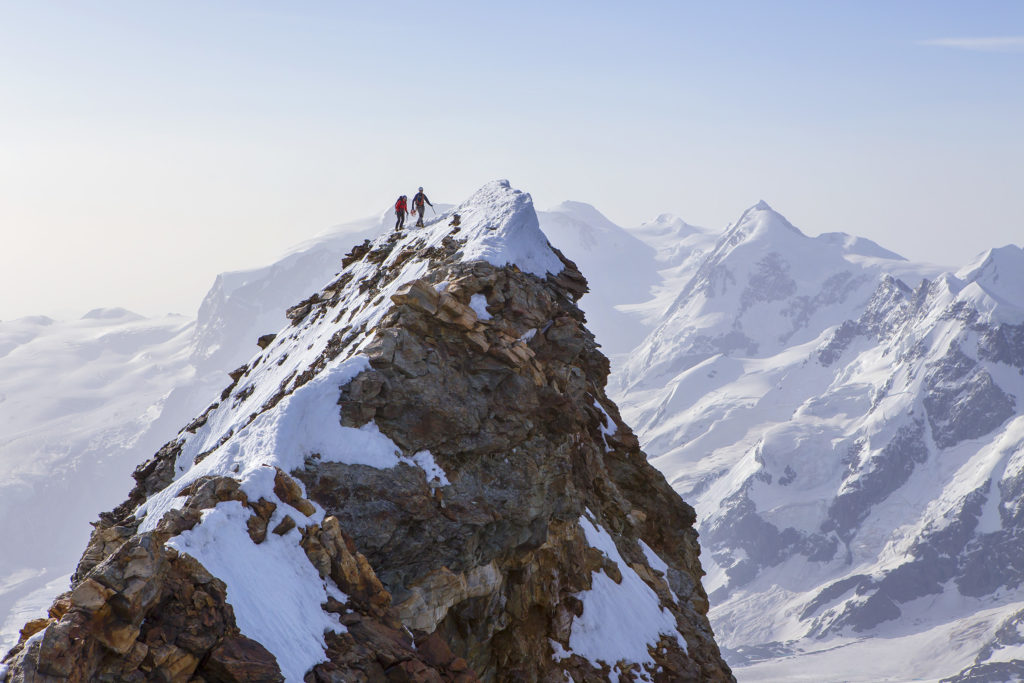
My fondest memories of the high mountains are also on skis. As soon as the snow lends itself to it, I strap on my skis - I can't help it! I love the feeling of being one with summits. A beautiful slope, powdery snow, a sunset and I'm off skiing. Under the blazing lights of the bleached mountains, I experience a magical moment. I'm in paradise!
And then, of course, I can't talk about my happy memories without mentioning my rescue missions. When you know that you've saved a life, that without your intervention people would have died, you can't help but be overwhelmed. It's a priceless gift, an immense joy. Saving lives gives meaning to my own. And it doesn't matter if the victims don't realize the danger they've escaped, or the gravity of the situation they were in. We rescuers are there. We know what we've done, and that's the main thing.
To conclude our interview, in what way would you say that your business helps to promote the Alps and the high mountains?
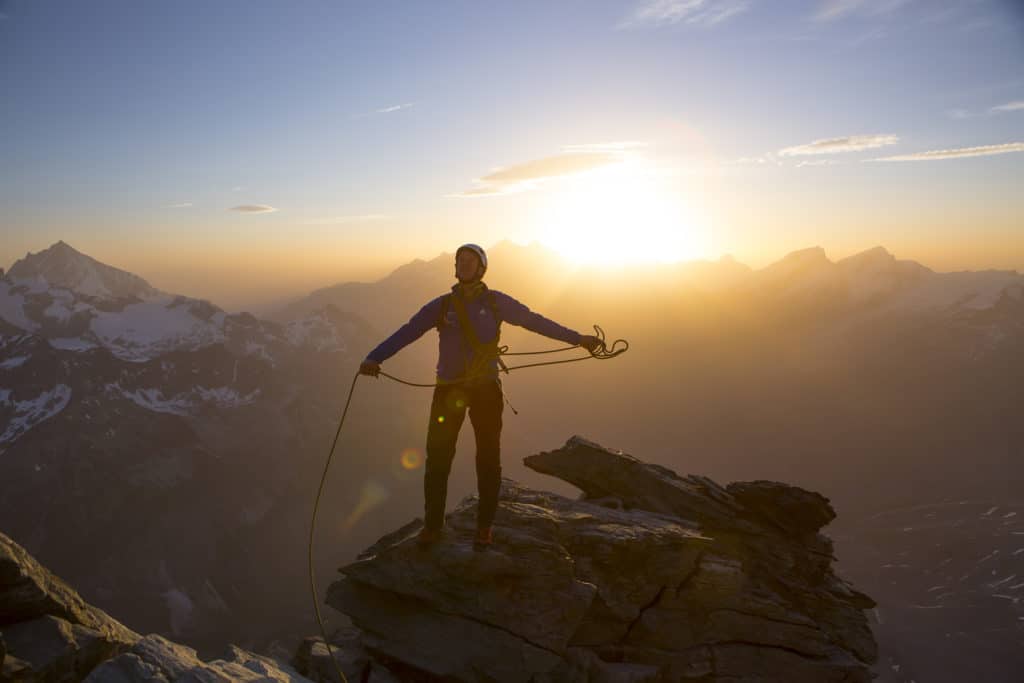
Hut wardens and mountain guides introduce the world to the exceptional beauty of the mountains and the infinite power of nature. Whether they are novice hikers or experienced mountaineers, we reveal something unique and precious to them. We help them change the way they look at the world around them and at nature. We share powerful values with them. We also help them make their dreams come true. Climbing summit, some of them have been thinking about it for years. They prepare for it, they look forward to it. And we, as guardians, guides and rescuers, enable them to carry out this incredible project. We are invaluable in being able to experience all this alongside them. It's what nourishes me and gives meaning to my life. The high mountains leave an indelible mark on you, and when they return to the valley, they'll be left richly imbued with the grandeur of the Alps.
Richard Lehner continues his mission at the summit of the Alps, with the deep desire to make us love this kingdom of ice that thrills him. Monte Rosa hut keeper, mountain guide and extreme rescuer, he lives his life carried by the winds and the glow of the high summits, in the light of laughing hearts and calming gazes. And if you happen to visit him at the Monte Rosa Hütte or the BaseCamp hotel in Zermatt, you'll discover my works. They are regularly exhibited there. United by the same fervor, the mountains unite us, much to my delight.
